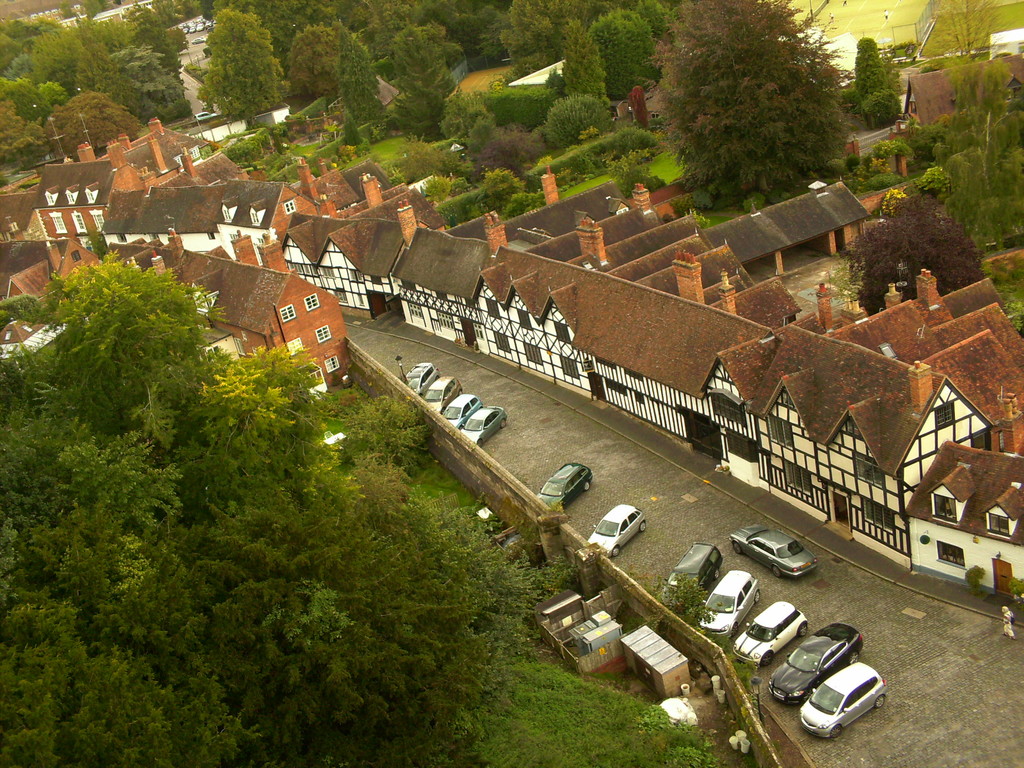
Some time ago I did really wanted to write about Warwick Castle, but it was like biting off more than I could chew. So that’s it – now I’m writing about the very castle I’ve visited during my trip to UK, which lasted no longer but two weeks. However these two weeks were the most amazing days, hours in my life, because not many have a chance to win a trip to UK including studying there, going to excursions, having a hostfamily and being with friends and all these free of charge, because I’ve been chosen in 36 students from all over the country to be the one visiting so dreamed about country – United Kingdom!

About Warwick Castle
Warwick Castle is located in the county town of Warwick, Warwickshire, England, on a bend of the river Avon. It is a main symbol of the town I think. It was originally built by William the Conqueror in 1068. That is pretty amazing if you ask me. This is a castle full of history.

When entering, you will see some kind of a scaffold, you can take pictures with your head in it. And everything changes. It's like you are in medieval England and there are knights and princesses everywhere. Somehow, I remember films about Robin Hood.
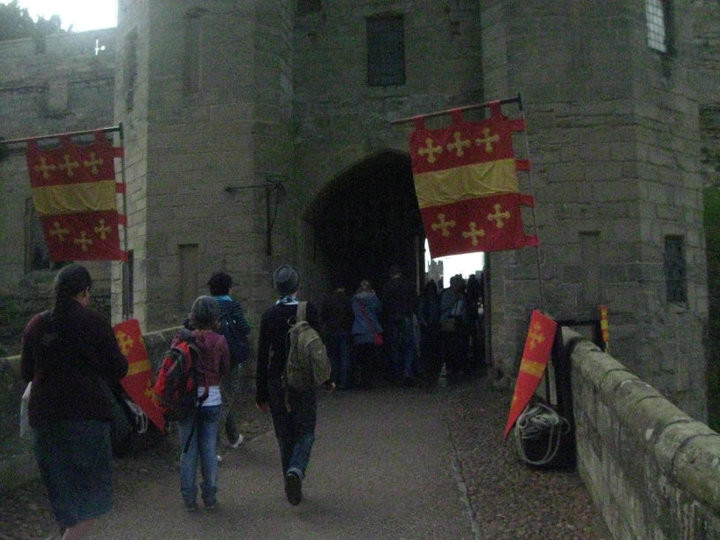
Castle Towers
The very first thing that conquers your attention is the castle's towers, those that we have seen in Disney cartoons and movies about kings and queens. There are spiral stairs in each of them and you can go up and then go to another tower by walking through linking walls between them.

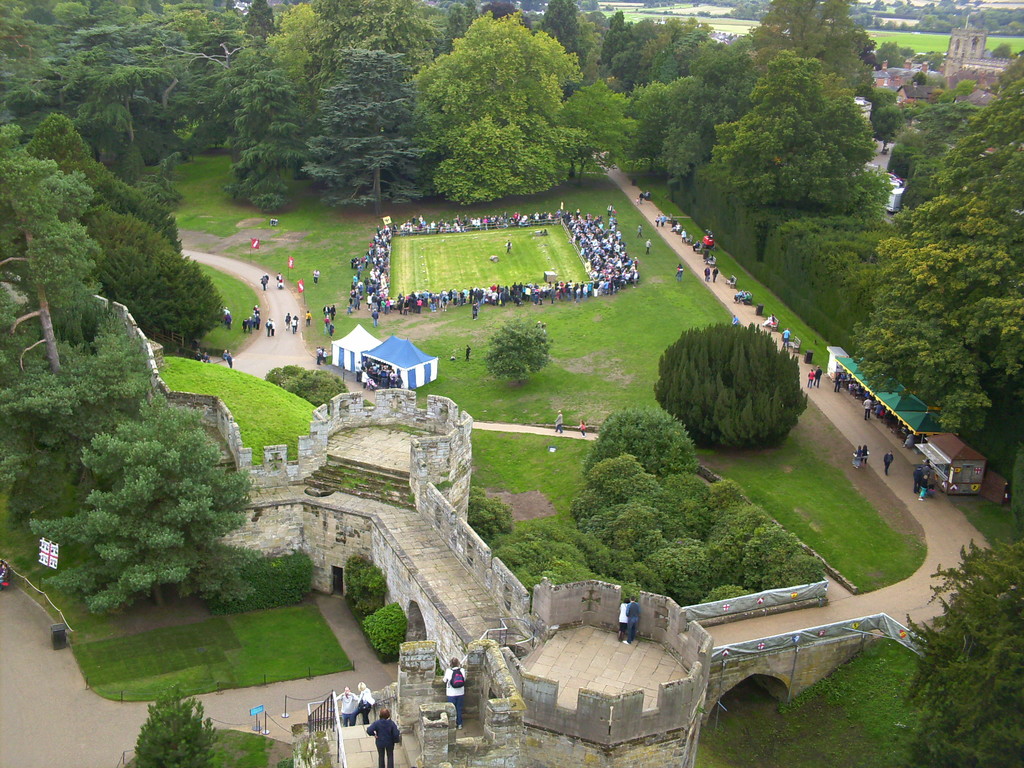
When you enter, you see this yard tidied up. Everything is very clean and neat and green. You find yourself surrounded by these splendid towers and people dressed as princesses, princes, kings, queens, clowns, dancers, etc. There are fake fights organised between knights for people and they watch these fights curiously. In such conditions it is very easy to imagine what it was like to live in medieval England in castles like this, how splendid the life would have been _ well, compared to those living in villages under the bondage and stuff like that. Imagine the knights and their great war stories and the manners they had and everything there is written by historians...
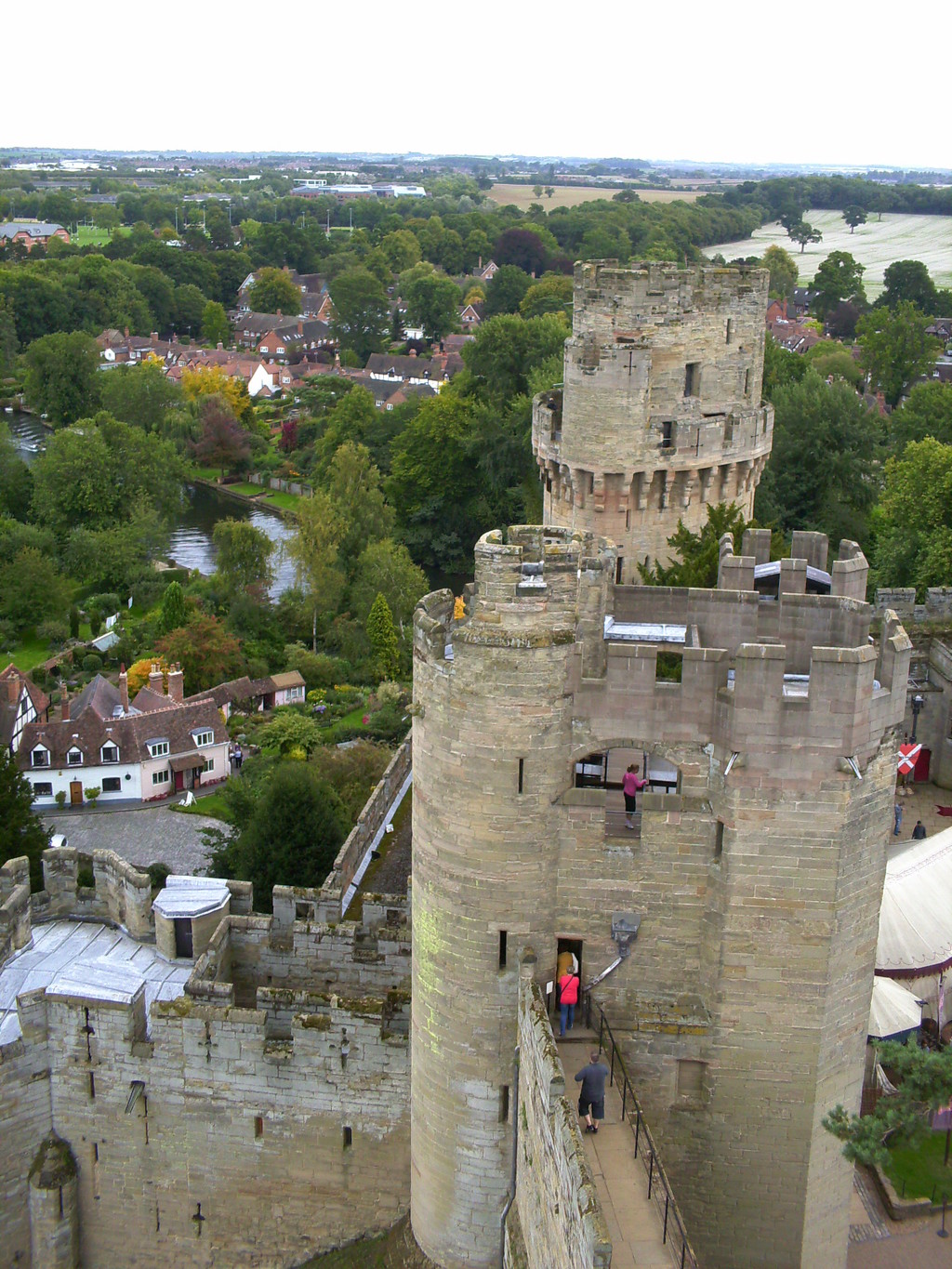
The towers are really high. Maybe at first you may think that they are not, but once you go up there and feel the air and look down, you will realise that you can see everything far from there and obviously, that's how they controlled things around the castle.
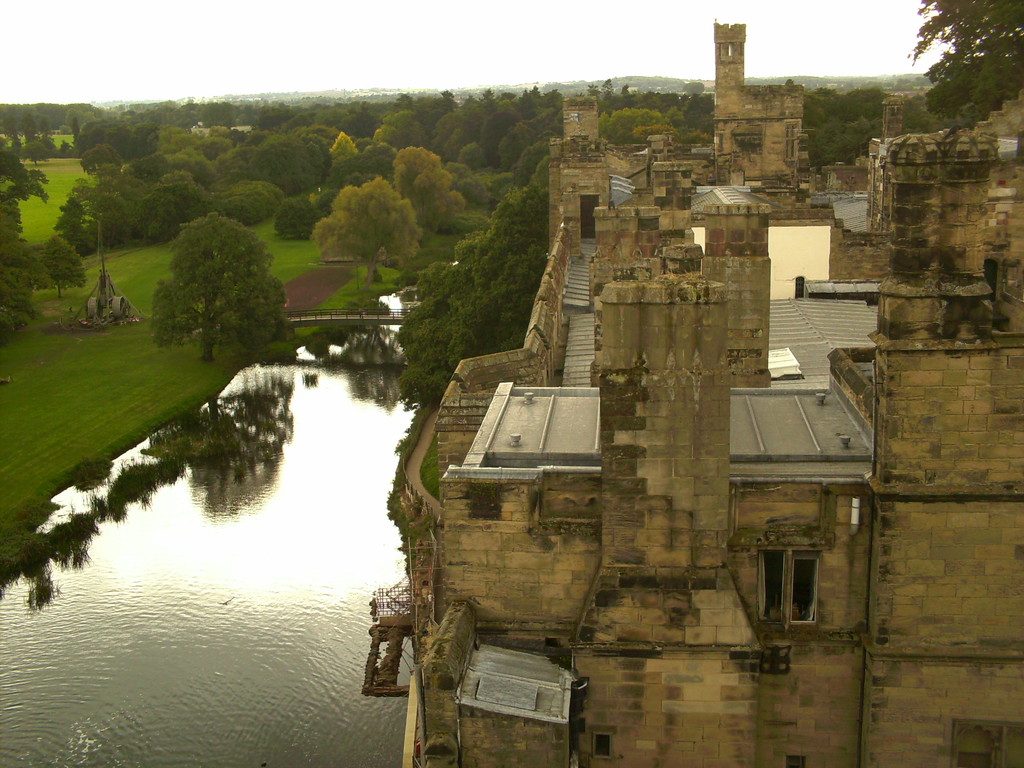
Inside the castle
Going inside, on the first floor, you will discover England in around 1500s. You will be amazed by all the armour and decorations and statuettes and antiquities and splendid furniture there. There is a really beautiful Cuirassiere's three-quarter armour. I think this vivid darkish blue colour would really fit to those men wearing this armour. The particular one there in Warwick Castle was from early 17-th century.
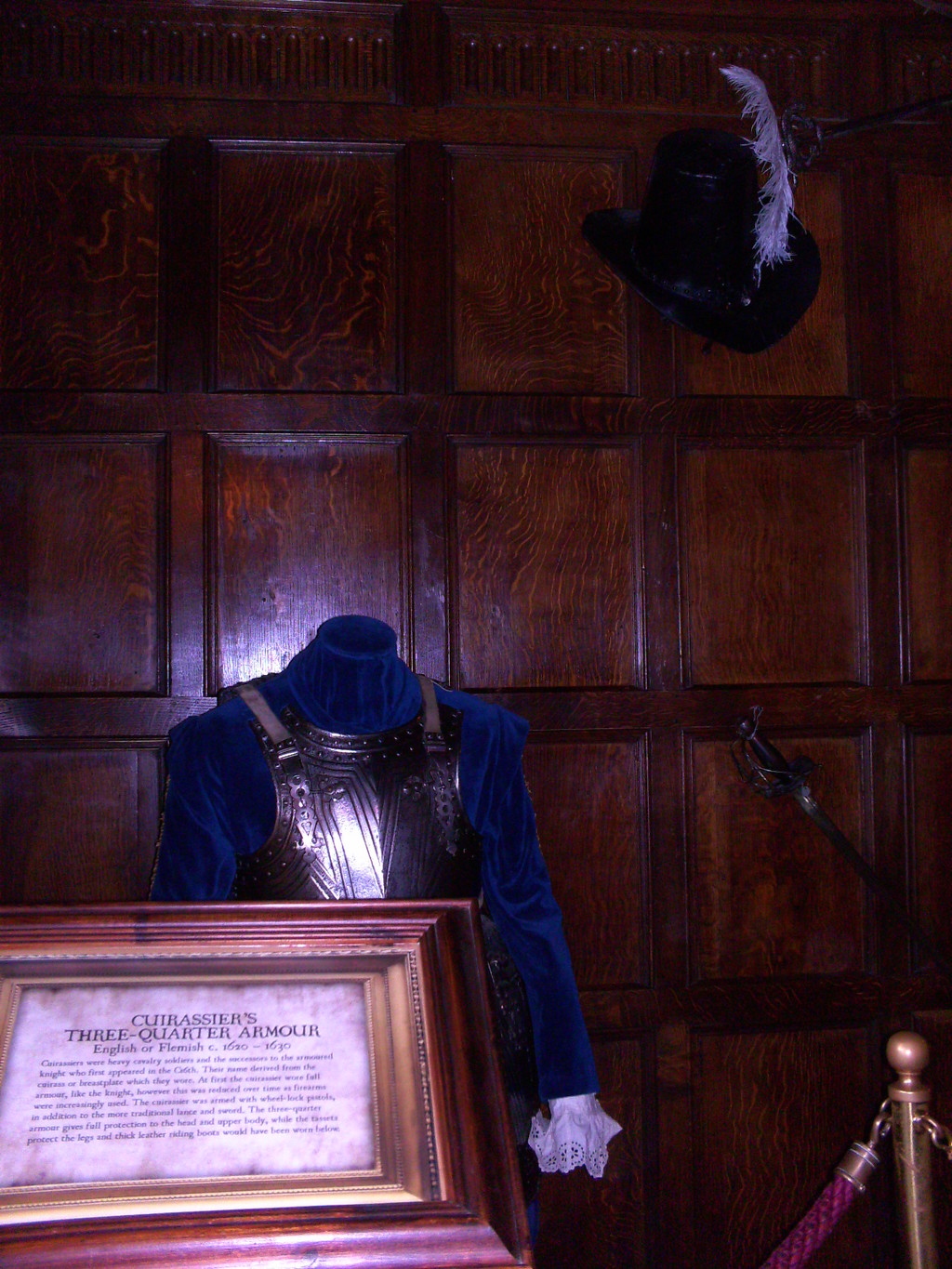
The Great Hall
The Great Hall is the largest room in the Castle. That is the room where the nobles ate, drank and slept. There was a large fire in the centre of the room and it must have been all in smoke and stuff during the eating and drinking. The Great Hall was first constructed in the 14-th century. It was rebuilt in the 17-th century and then restored in 1871 after it had been badly damaged by a fire which swept through part of the Castle. There is a miniature suit of armour that is believed to have been made for the four year old son of Robert Dudley, the Earl of Leicester. He died when he was just six.
Going inside, the very first thing you'll see are the State Rooms. These are huge rooms, where the nobles were seen. From there you go to the State Dining Room. This is a splendid room with all those accessories and paintings and chandeliers and statuettes, and, oh my God, this is something you should see it yourself! It will fascinate you. This is just something one can not forget seeing. It was originally commissioned by Francis Greville in 1763. George IV, Edward VII, Queen Victoria and Prince Albert have all been there and dined there and this room is still used for impressive dinner parties. So, I have always loved art and in my art classes we were taught about many famous artists and their paintings and I remember seeing this particular one of Van Dyck's. So, I didn't know about it and it was a nice surprise for me to see this painting of Charles I on horseback by Sir Anthony Van Dyck. This is a great painting and seeing it in person _ the original one, is like heaven for people like me who love art and admire such things.
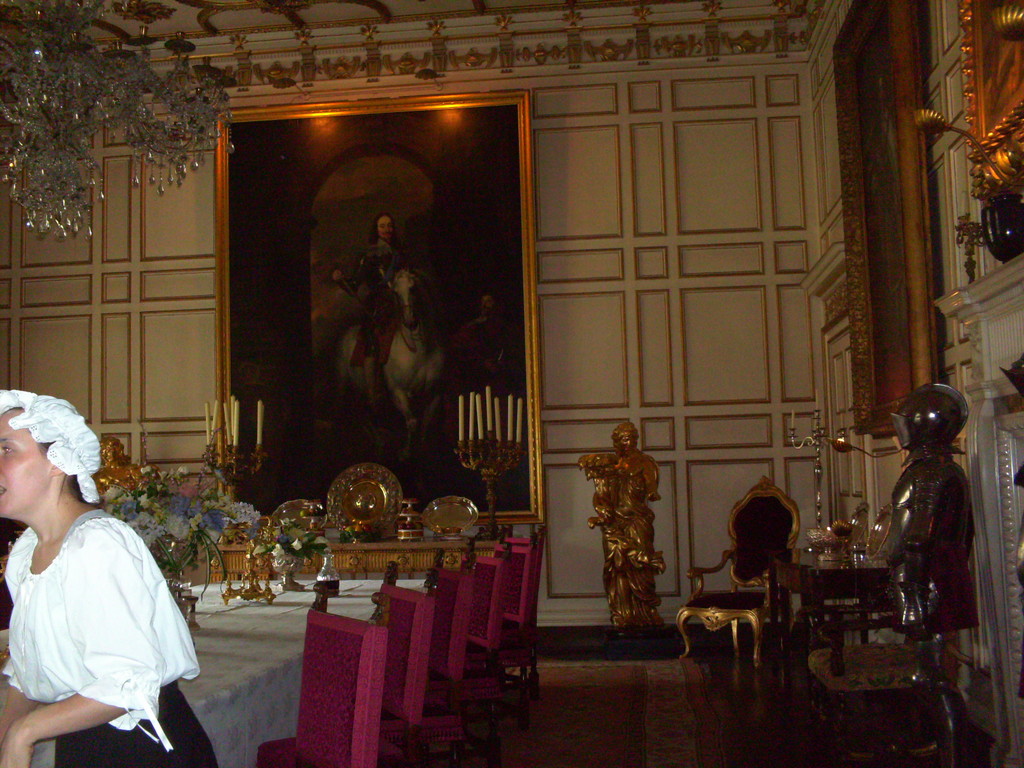
Red Drawing Room
Then, there's the Red Drawing Room with paintings of famous artists, such as Ambrosio Spinola and Sir Phillip Sidney, and a popular painting there is a painting of Jeanne d’Aragon, the granddaughter of King Ferdinand IV of Naples.
There is the Cedar Drawing Room, which was completed in 1670s by two local craftsmen, William and Roger Hurlbult. There are all the 18-th century chandeliers that are English with one exception _ the one in the centre is Irish crystal from Waterford.
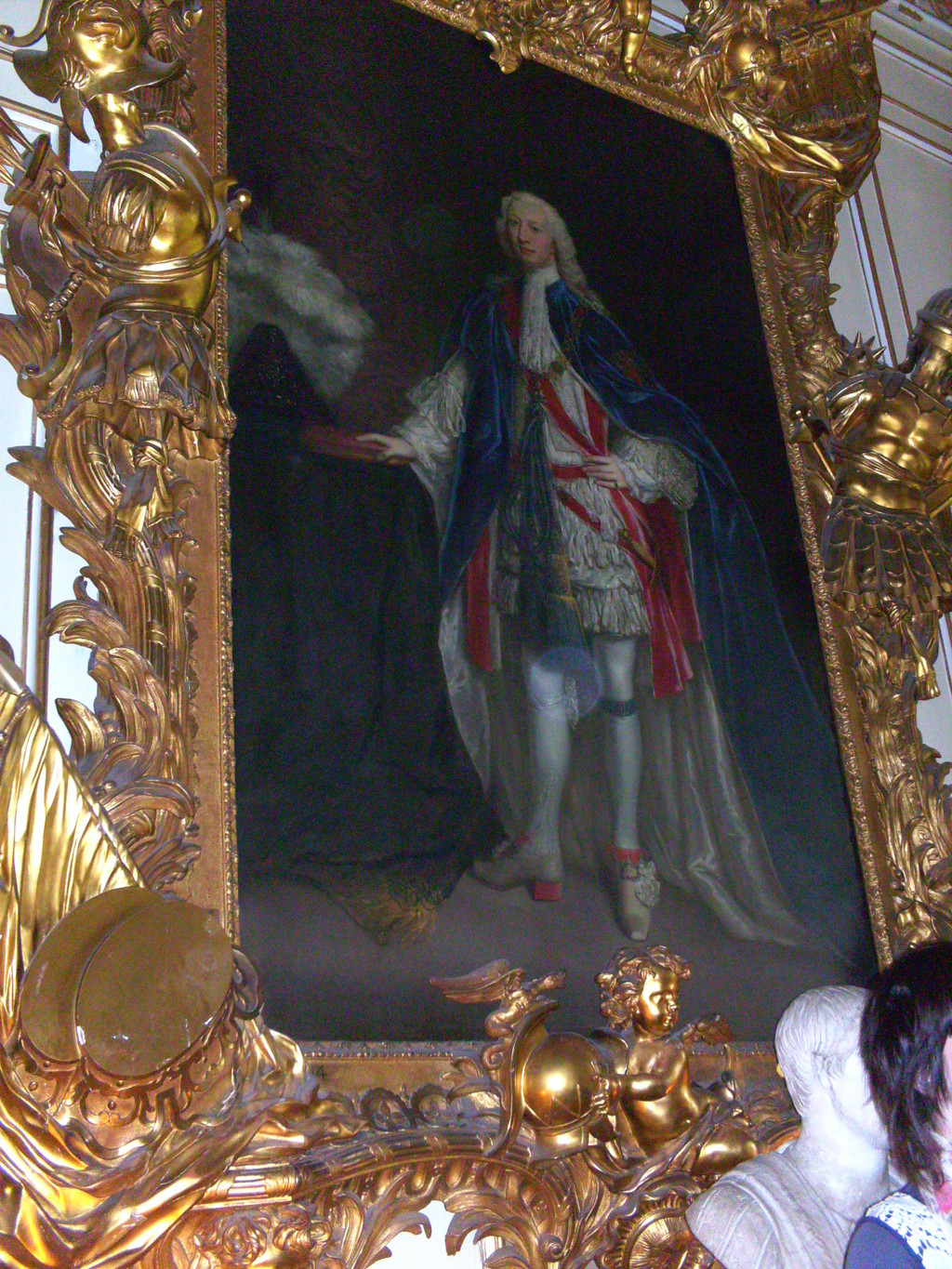
Green Drawing Room
There room, characterised by its vivid green colours, stands out due to its walls full of paintings and it's like mainly about the English Civil War and the paintings are of those people mostly, who perished in that time.
Queen Anne Bedroom
Then there is the Queen Anne Bedroom, and it's known, that Queen Anne was to have visited Warwick Castle in 1704, but the visit was cancelled. However, according to tradition, her bed was sent there in Warwick from Windsor. And in 1773, King George III made the bed a permanent gift to the castle.
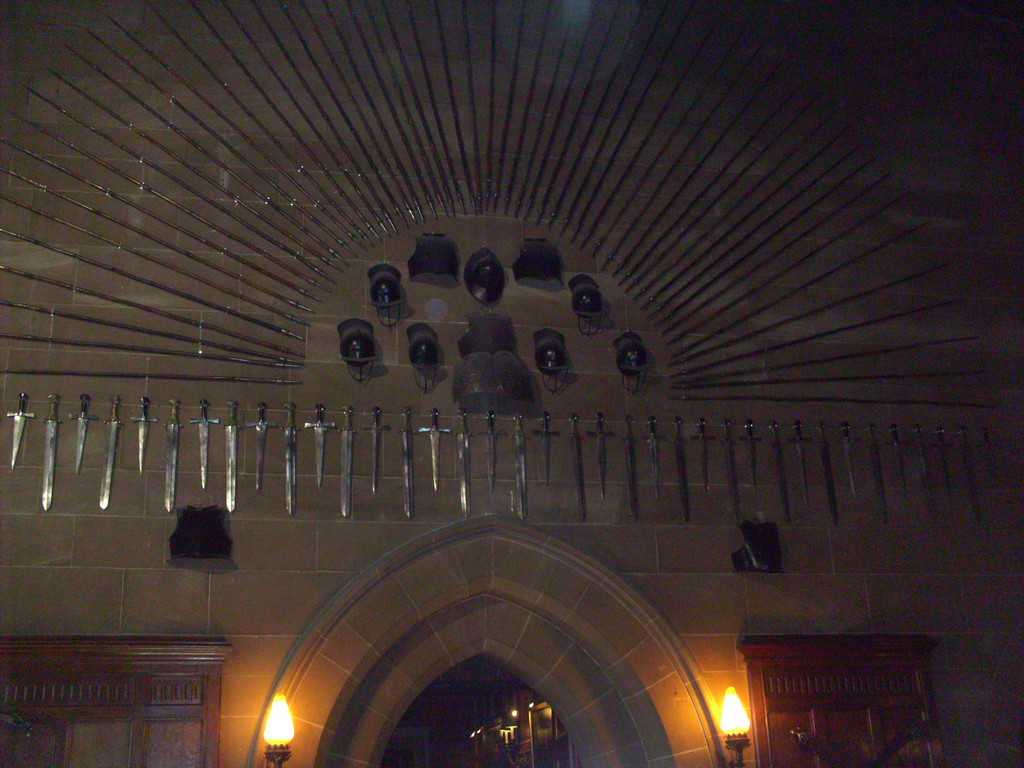
The Blue Boudoir
The Blue Budoir was a dressing room in the 17-th and 18-th centuries. The most popular aspect of the room is a portrait of King Henry VIII, from the studio of Hans Holbein, which shows the King in his early forties. There is a table in the Blue Boudoir which was made in Florence in the 17-th century. It is made from marble and lapis lazuli and there are the coats of arms in the four corners of the Grimani family of Venice.

One of the greatest things are wax figures. Who doesn't like them?! The figures look so surprisingly alive that you may think they are real. And so, in one of these vast rooms, you will find King Henry the 8-th with all his six wives around him. This is a great scene. And there is even a bed in a room next to it, where he slept during his stays in Warwick Castle.


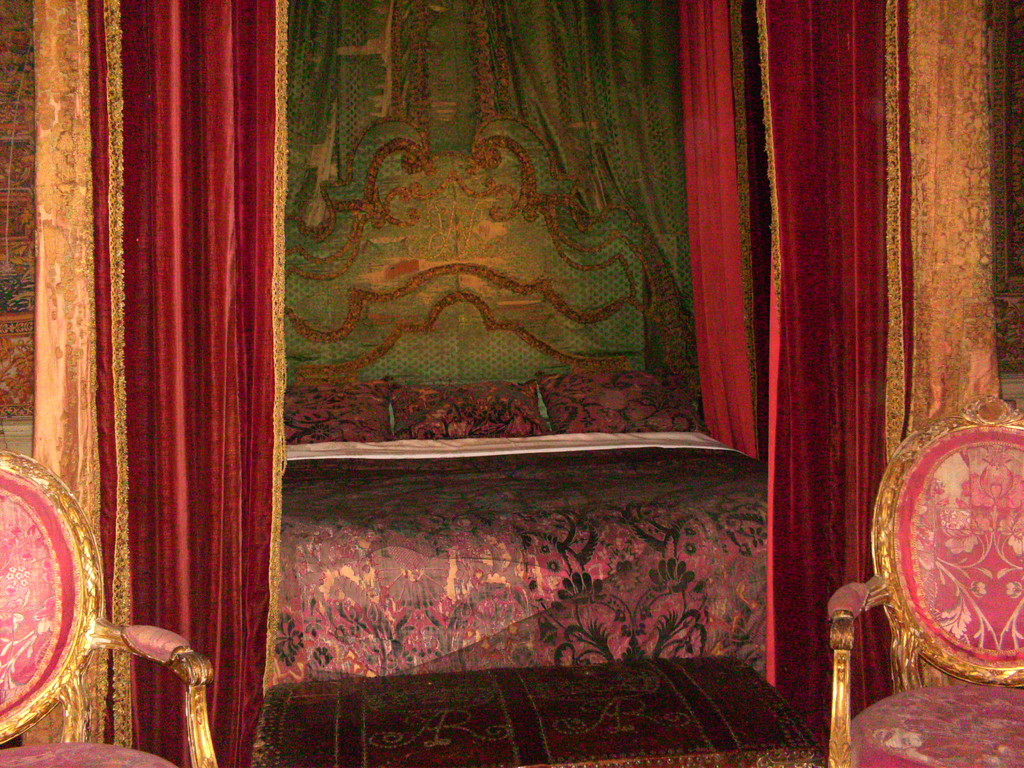
Trebuchet
So, imagine my surprise to walk in there in the Warwick Castle yards and see some trebuchet and just pass by, and some time later my friend said that this was a great trebuchet. And then I found out, that it is the largest siege machin in the world! The trebuchet was the largest and most formidable of the siege machines and a huge catapult. It was used to hurl huge projectiles to breach the castle walls. Large rocks and stones were mainly used, but there were other things too, which were used to hurl and throw. Dead animals were also hurled by the machines into the besieged castle to spread diseases. And the best animals were the pigs. Can you imagine that? Pigs were often picked as the animal of choice as they were thought to be more aerodynamic. Well, I don't know about their aerodynamic characteristics, but their meat is really good to turn down. So, imagine flying pigs! This trebuchet was built in 2005 and since then it has been shot 6, 500 times. It was built by Dr. Peter Vemming from Denmark and some notes and drawings from the 13th century were used for the reconstruction. The trebuchet is made mainly of oak, but with the long throwing arm made of the more flexible ash.

Ballista
There is also The Ballista. This is a Greek word "Ballistes" and means "to throw". The ballista was a giant stationary crossbow that fired long heavy bolts or arrows. These were used to demolish the castle parapet and kill the defenders. It was also a weapon of defence that could be positioned on the walls and towers to fire on the attackers and their siege machines. It was a very good weapon and was used very often. You can see the Ballista near the bridge in Warwick Castle yard.
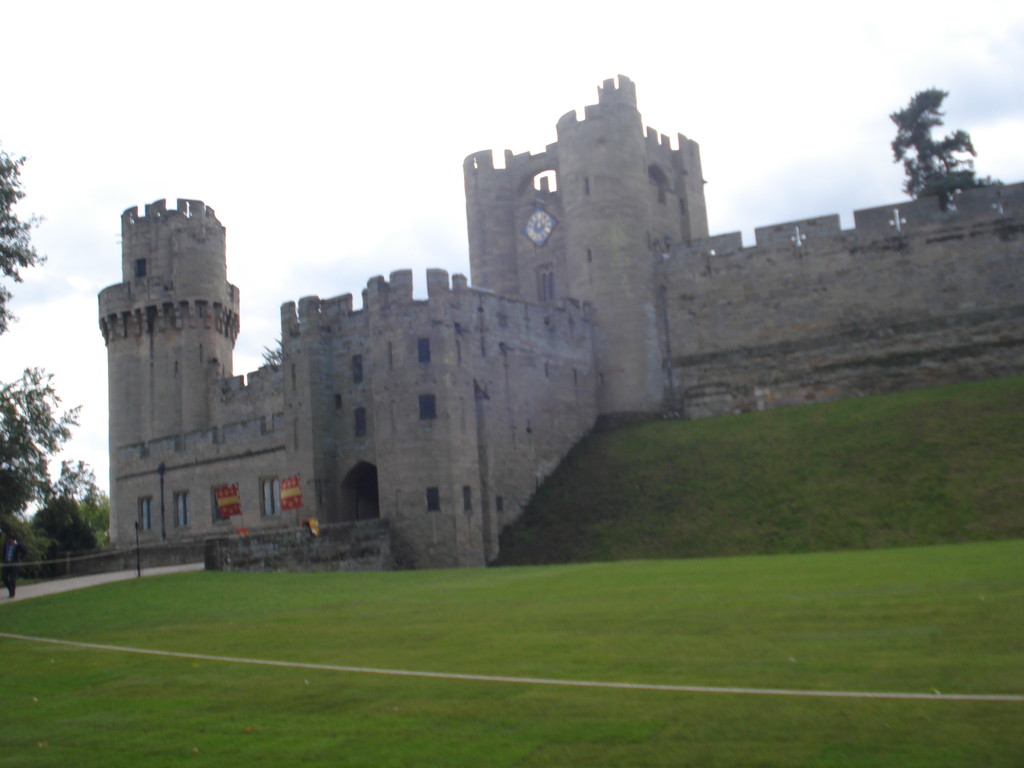
We had a great experience there in Warwick castle. Of course, there were some funny situations, like we lost each other and were looking everywhere and then we went out and then came back and then took some photos and went outside again, but those have become some great memoriesthat we will remember forever and never forget.
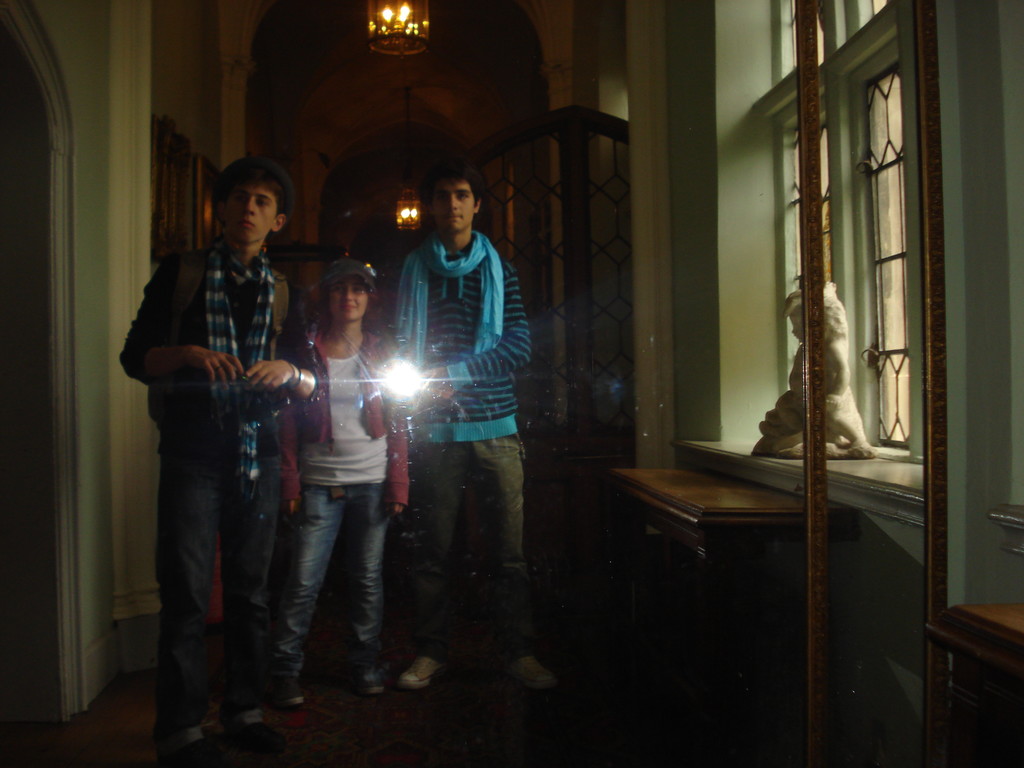
 What to see Warwick,
Warwick,
United Kingdom
What to see Warwick,
Warwick,
United Kingdom
























































